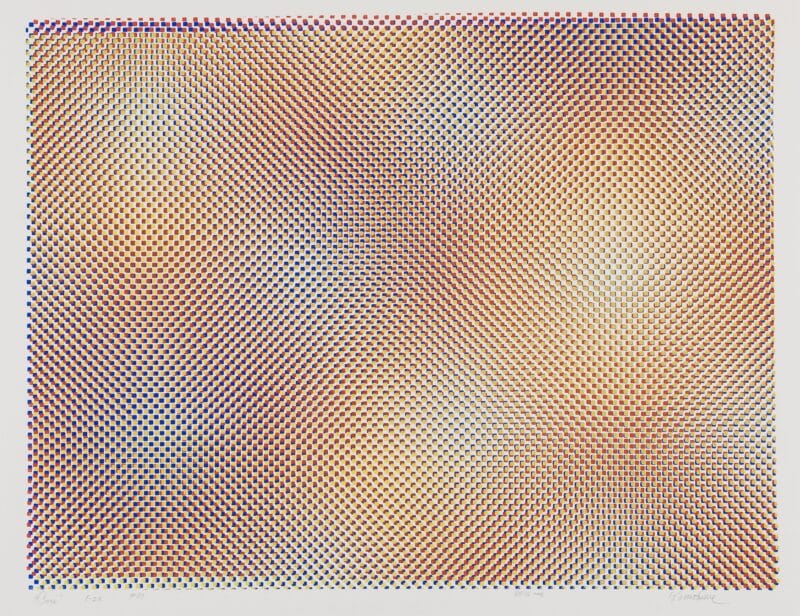Past Exhibition
Op Art
Abstract Illusion
Bill Komodore (American, 1932 – 2012), “Circe #10,” 1965-1966
What we see may be more
than meets the eye.
“Op Art: Abstract Illusion” explores a pivotal moment in the history of art, when artists began to experiment with color and form to create disorienting perceptual effects. Consisting of works from the permanent collections of the Des Moines Art Center, all acquired in the 1960s and 70s, at the height of the Op Art (or Optical Art) movement, the prints and paintings here cast the reliability of vision into doubt, demonstrating that what we see may be more than meets the eye.
In the 1960s, Op Art arose simultaneously across the globe, in the United States, Europe, and South America. Op artists exploited the idiosyncrasies of perception to create a new style of abstract art. A variety of cultural, social, scientific, and technological forces drove the emergence of Op art. During this period, the study of phenomenology, or the experience of consciousness, was evolving. Scientists developed technologies for mapping brain activity and studying glitches that occur in how humans process visual stimuli. The pursuit of heightened states of awareness grew in popularity and, along with it, experimentation with psychedelics.
Taking inspiration from these sources and more, Op artists created works that elicit unexpected sensory effects using a variety of means, including contrasting colors, perceptual illusions, and after-images. They also embraced patterns that appear to distort, pulse, or switch color. Immensely popular in both fine art and everyday life, Op art quickly became a worldwide phenomenon, visible in museums and galleries as well as in magazines and fashion.
“Op Art: Abstract Illusion” is organized by Associate Curator Elizabeth Gollnick.

Bill Komodore (American, 1932 – 2012)
Circe #10, 1965-1966
Screenprint on paper
Des Moines Art Center Permanent Collections; Purchased with funds from Rose F. Rosenfield, 1967.42
Photo Credit: Rich Sanders, Des Moines